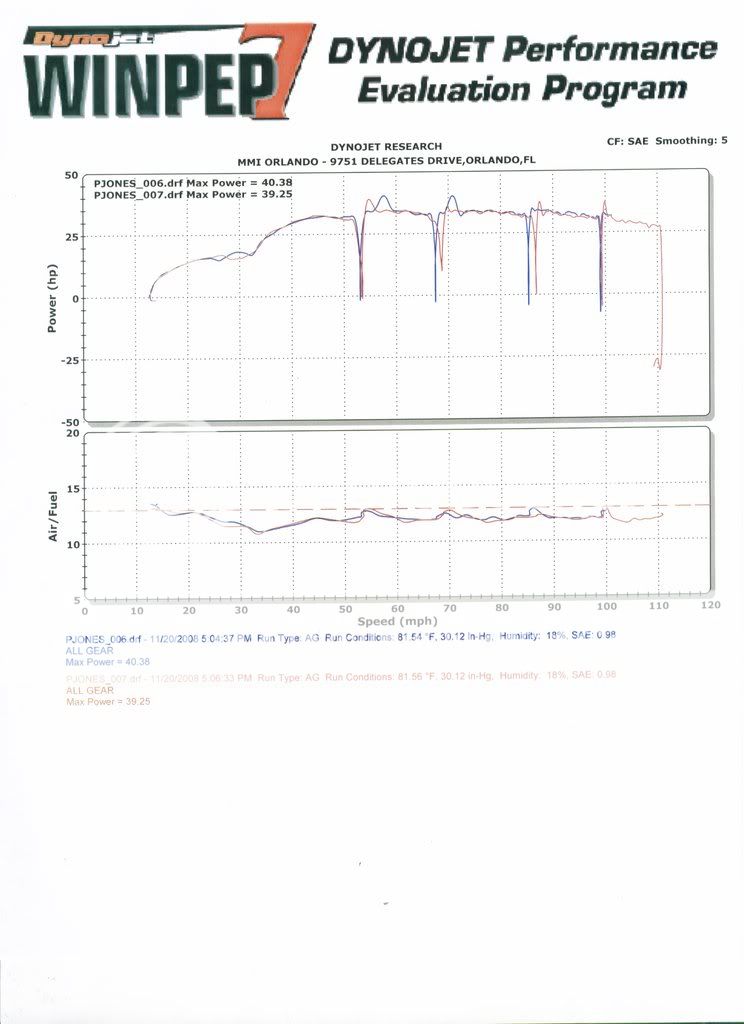Ok Greg, gotcha.
Then the dynamometer will provide you with a set of base line curves for power and torque, "base line" meaning a description of what you have now to be conpared to whatever you achieve later when you start tweaking your engine.
A few things to consider:
- In all probability, and based on my experience, the "run what you brung" free dyno days are 90% show and 10% essence - especially if no gas analyser is used. So treat this as something fun rather than as something serious.
- If you are seriously... serious about tuning or modifying your engine, make sure to have it run on the same dynamometer, under the same ambient conditions (if possible) and (again if possible) by the same man. "Corrections" exist to compensate for these differences but it will be to your benefit to try and eliminate as many external variables as possible. The reason is that dynamometers are notoriously inconsisent in their results. If you take the same bike on the same day in two different shops in the same area you'll probably get two different sets of curves - even from dynos of the same brand/model. Add to that the "correction factors" applied (usually at will) and you can get very confused very quickly.
- A dyno run (not just the graph) can provide you with quite some information, provided the man who runs it knows how to use it
- There will always be a difference (most times a considerable one) between the bike being run on the dyno and the same bike running on the road. So, again, the dyno run is not meant to be taken as a simuation of riding the bike at full song but as a test run under "nominal" conditions.
I could probably talk more about dynos but believe it would be besides the point. Bottom line: find a shop near you. Run the bike as it is now (with the gas analyser). Then start playing with the power plant (and the power train - there are hidden horses there too). Compare with what you started with. Adjust/correct/pay as necessary and repeat cycle until you burn a hole in your pocket (I should know). Simple.
Enjoy and keep us posted!
M.




